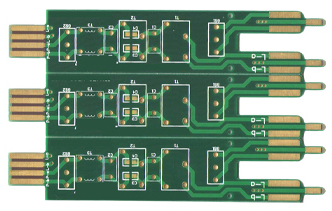Those circuit boards on which the components are firmly glued should never be regarded as decoration of the PCB board. Until the components are installed on it, advanced circuit boards will not be able to provide their functions. The PCB with the components installed is called assembling PCB, and the manufacturing process is called PCB assembly or PCBA for short. Copper wires (called traces) on the bare board electrically connect the connectors and components to each other. They run signals between these functions, allowing the board to operate in a specially designed manner. These functions range from simple to complex, but the size of the PCB may be smaller than the thumbnail.

Electronic products are an indispensable part of daily life. From smartphones to cars, everything includes electronic components. The core of these electronic products is the printed circuit board, also known as PCB.
The PCBA process always starts from the most basic unit of the PCB: the base is composed of multiple layers, and each unit plays an important role in the function of the final PCB. These alternating layers include:
Substrate: This is the basic material of PCB. It provides rigidity to the PCB.
Copper: Add a thin layer of conductive copper foil on each functional surface of the PCB-if it is a single-sided PCB, if it is a double-sided PCB on one side. This is the copper trace layer.
Soldering mask: The top of the copper layer is a solder mask, which provides a unique green color for each PCB. It insulates the copper traces from inadvertent contact with other conductive materials, which can cause a short circuit. In other words, the solder keeps everything in place. The hole in the solder mask is where solder is applied to attach the component to the board. The solder mask is a key step in the smooth manufacturing of PCBA, because it can avoid soldering on unwanted parts and avoid short circuits.
Screen: White screen printing is the last layer on the PCB. This layer adds labels to the PCB in the form of characters and symbols. This helps indicate the function of each component on the circuit board.
These materials and components remain basically unchanged on all PCBs, except for the substrate. PCB substrate materials vary according to specific qualities (such as cost and bendability)-every designer is looking for a finished product.
The three main PCB types include:
Rigid PCB: The most common type of PCB substrate is rigid, which occupies most of the PCBA. The solid core of the rigid PCB gives the board rigidity and thickness. These inflexible PCB bases are composed of several different materials. The most common is glass fiber, otherwise called "FR4". Cheaper PCBs are made of materials such as epoxy or phenolic resin, although these materials are not as durable as FR4.
Flexible PCB: Flexible PCB is more flexible than flexible PCB. The materials of these PCBs are often bendable high temperature plastics like Kapton.
Metal core PCB: These circuit boards are another alternative to the typical FR4 circuit board. These plates are made of a metal core and dissipate heat more efficiently than other plates. This helps dissipate heat and protect more circuit board components that are sensitive to heat.